Welcome to your ultimate guide to developing emergent writers in preschool. We have included the what, the why, and the how, to prepare your early learners to be successful and confident writers, at any stage.
With this guide, you will come away feeling confident and with new fun ways to teach writing in preschool.
What You Need to Know About the Development of Emergent Writing in Preschool
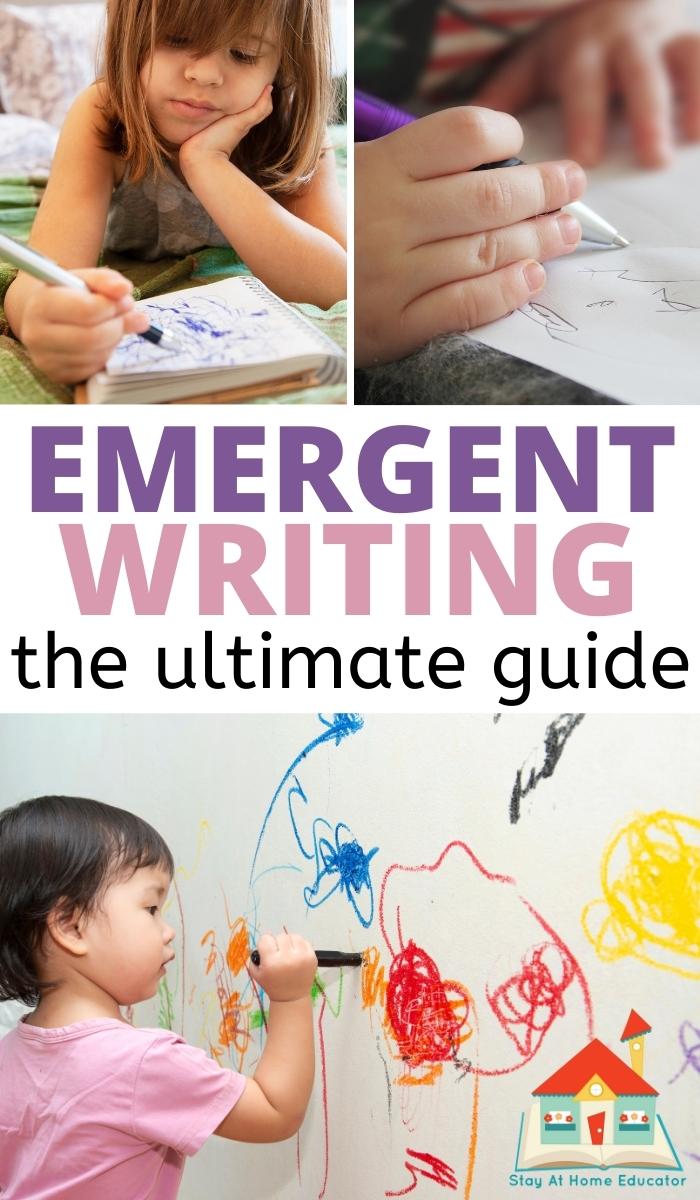
Children go through a series of stages as they are learning to write. From the first scribbles to writing names, there are anticipated stages. While the characteristics within these stages may vary depending the child and the lines between the stages are a bit blurry, the series of stages are predictable and every child moves through the stages at some point for some period of time.
Children improve their writing ability and their understanding of it as they continue to be exposed to writing in the world around them, including teacher and parent modeling. You can see how emergent writing develops as the child becomes more confident and more versed in the alphabetic principle.
What is Emergent Writing in Preschool?
Emergent writing is a young child’s first attempt at the writing process. Children as young as 2 years old begin to imitate the act of writing by creating drawings and symbolic markings that represent their thoughts and ideas. This is the beginning of a series of stages that children progress through as they learn to write.
(Rowe & Neitzel 2010; Dennis & Votteler 2013)
It sounds obvious, right? Emergent writing is writing. But it’s a little more complex than that.
Emergent writing includes:
- learning how to handle writing utensils
- making marks and scribbles
- understanding what written communication is
What Emergent Writing is Not
Emergent writing is not (just)tracing letters and numbers at the preschool writing center. While letter formation and number tracing has its place in the range of writing activities for preschoolers, emergent writing focuses on all the skills preschoolers need to have mastered before tracing letters has any benefit.
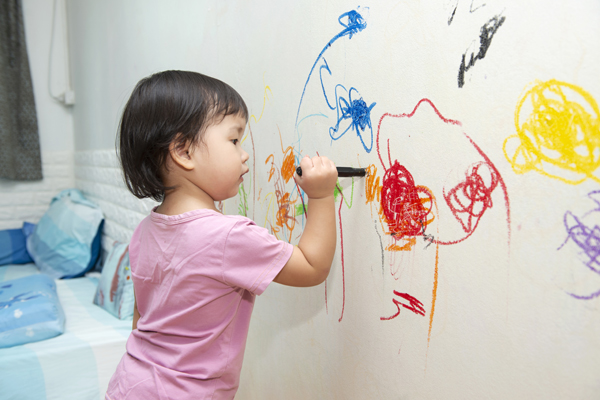
The Stages of Emergent Writing in Early Childhood
Every child approaches writing differently and some will spend less time than others in the initial stages of writing.
Stage 1: Writing Consists of Drawing/Scribbling
Scribbling looks random, but to a child, scribbles are very purposeful. While scribbles do not resemble letters or writing, they do represent the ideas of a young writer.
Have you ever had a preschooler show you a big circular brown blog of scribbled colors on a sheet of paper and ask, “Do you like my picture?” That seemingly haphazard, furious scribbling is actually something specific to the child, even if they cannot articulate what.
It is beneficial for children to draw and scribble because it feels like a comfortable starting point for their ideas and allows them to participate in the writing process. These beginning attempts at writing can be proud accomplishments to a youngster and should be encouraged.
By around the age of three, many children will be able to scribble and produce letter-like shapes that mimic traditional writing. At this age, they won’t have grasped letter formation just yet and their pencil grasp may still be in the digital grasp formation.
At this stage, thick crayons and markers on unlined paper are the most appropriate.
Related Reading
Stage 2: Writing with Letter-Like Symbols
At this stage in development, children make the connection that writers use symbols to convey meaning. Their scribbles have taken on more shape, such as circles, straight lines, and other figures of meaning to the child.
In fact, at a recent visit to the pediatrician’s office your child might have been evaluated on how well they can draw symbols like straight lines, circles, a closed square with sharp edges, crosses and slashes. These are all pre-writing shapes that are required for writing letters in the English language.
However, there is little orientation at this stage, meaning that these letter-like forms will appear all over a page, not from top to bottom and left to right. Children are excited to share with others their writing and can often tell a story about their picture.
Between the ages of 3 and 4 years old, children begin to identify some letters and use them when writing. For example, they may be able to write their own name or write simple words. They may also draw pictures and attempt to label them using letters, or marks that look like letters.
Crayons, markers, and blank paper are still appropriate writing tools. Check out this post about a writing center for home.
Stage 3: The Use of Letters to Write
In this stage, children begin to use random, but oftentimes somewhat familiar letters, such as those in the child’s name. Writing usually consists of strings of upper case letters with little or no concern about the spacing of letters or between words. During this stage, children still do not recognize letter-sound relationships in their own writing, so letter sounds may not correspond to what the child has believed to have written.
Often around 4 to 5 years old, children understand and begin to apply the knowledge that writing is made up of letters and words. At this stage, children gain from expanding their use of writing materials. Cards, envelopes, notepads, colored pencils, and some pens are motivating to children at this stage of writing.
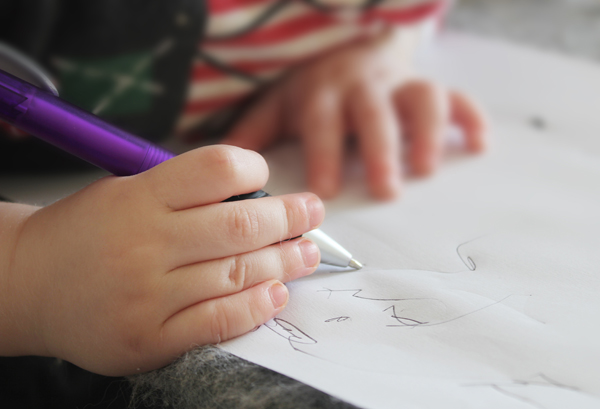
Related Reading
Stage 4: The Importance of Letters and Spaces
During this stage of writing development children learn more about how spoken words correspond with written words on a page. They often point to familiar words in text, albeit sometimes wrong, such as the child that holds up a book and says, while pointing to the title, “Construction,” when the actual title is “Roadwork”. This demonstrates the child knows the concepts of words in writing. However, it is not until kindergarten and first grade that children can master word spacing in their own writing.
Within this stage, children go through a series of mini-stages that include representing initial sounds with corresponding letters. Children first use consonants to represent words and will later insert vowels. At this point the spelling of words is more inventive than phonetic.
Children gain from using a range of writing materials, as well as writing for multiple purposes. You might add a list pad in the kitchen area for dramatic play, or have your preschoolers “sign in”for the day. Children in this stage have begun to transition into a more decodable writing.
By the time a child reaches 5 years old, their tripod pencil grasp and accurate letter formation help these writers blossom. They have learned the sounds that letters represent and are using those sounds to inventively spell. They’ll soon learn to write sight words and words that they commonly use and see.

Stage 5: Conventional Writing and Spelling
In this final stage of writing development, children have a fairly firm grasp on letter formation. Most words are spelled correctly, and those that are not, represent a base in phonics. They have knowledge of upper and lower case letters, letter placement on paper, and spacing between letters and words. With this knowledge, children’s writing looks more traditional like that of the English language.
Beyond this stage, children will learn to write simple sentences and incorporate the basic rules of grammar, such as capital letters at the beginning of sentences and punctuation at the end. Their writing skills will continue to grow as they become readers and more aware of how the written word is presented.
Click here for images exemplifying each stage of writing development.
How to Provide Authentic Writing Practice in a Preschool Classroom
Once preschoolers reach a certain point in reading and writing development, they may begin to say things like, “But I don’t know how to write.”
What your preschooler is telling you is that they need more emergent writing activities. They need more time to explore how writing can be used. Writing activities in early childhood education should be focused on meaningful writing activities, not tracing random letters on worksheets.
Here are some ideas for providing authentic writing practice in your classroom.
Dictated Stories
A dictated story is one where the child draws a picture and then dictates to the adult what story that picture tells. The adult writes exactly what the child says and makes no corrections.
Dictated stories can be as simple as “Me and my mom.” Or, they might be run-on sentences like, “We went to pick apples and I used the picker on a stick and knocked the apples off the tree and one hit my sister on the head and she cried and I got in trouble but we got lots of apples to take home.”
Name Writing
Preschoolers benefit from daily writing experiences and opportunities to build confidence as budding writers. Name writing is a great motivator for helping children learn to write and feels meaningful and important to each child. Plus, writing your own name helps children associate the first letter with a sound.
You can incorporate name writing into your classroom in so many ways. Here are some ideas:
- Have children “sign in” to class.
- Make artwork out of name tracing activities.
- Make name booklets.
- Have children rainbow write their name on tag paper and use their name to “vote”in question of the day activities.
- Have preschoolers add their names to a list for activities in the classroom.
Journaling
Allowing children the opportunity to draw, scribble, and/or write with letter-like symbols, no matter the emergent writing stage is SO valuable. Journaling allows preschoolers to put their ideas on paper with no pressure. I want to validate their stories, so I record them exactly as they are told, like in a dictated story. You will see a range in development within these stories, which is completely normal.
Note: I do ask the child first if it’s ok if I write their story on their paper. Some children can feel protective of their writing and want to keep it just their own, without adult marking. Using a sticky note to record their ideas is a great alternative to marking their paper.
Teacher Modeling
Children benefit greatly from teacher modeling. Teachers should regularly model writing and offer opportunities for students to participate in interactive writing.
Teachers can connect writing to topics of interest, think aloud about the process of composing a message, and explain how to plan what to write (e.g., choosing words and topics, along with the mechanics of writing, such as punctuation).
Dennis & Votteler 2013
Children struggling to attain early writing skills benefit from explicit teaching, too. Teach children that letters create words and words create sentences.
Use environmental print (e.g., labels, charts, signs, toy packaging, clothing, and billboards) to help children realize that print is meaningful and functional . These types of activities build both conceptual and procedural knowledge.
Neumann, Hood, & Ford 2013
During Centers and Dramatic Play
Preschoolers benefit from daily writing experiences, so it is helpful to embed writing in the daily routine. Dramatic play is one of the easiest and best ways to add writing practice in a playful, yet meaningful, way. Check out Play to Learn Preschool for ideas.
Be sensitive to preschoolers’ varying levels of fine motor skills and promote the joy of experimenting with the art of writing, regardless of a child’s current skill level. Encourage invented spelling and attempts at writing letters or letter-like symbols.

I’m Sarah, an educator turned stay-at-home-mama of five! I’m the owner and creator of Stay At Home Educator, a website about intentional teaching and purposeful learning in the early childhood years. I’ve taught a range of levels, from preschool to college and a little bit of everything in between. Right now my focus is teaching my children and running a preschool from my home. Credentials include: Bachelors in Art, Masters in Curriculum and Instruction.
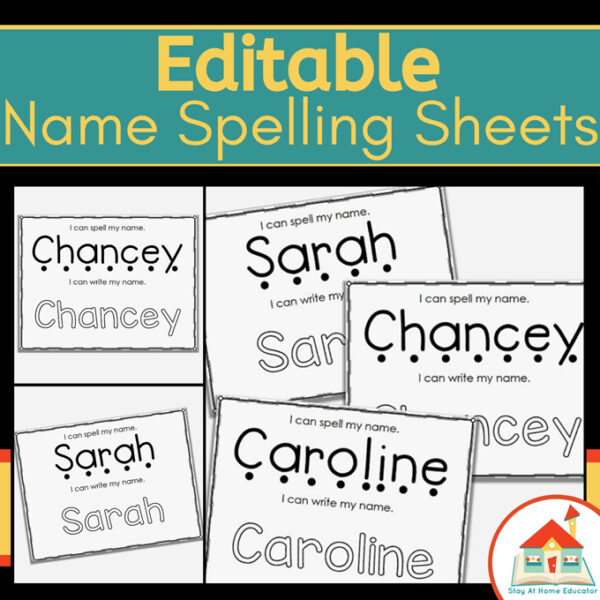
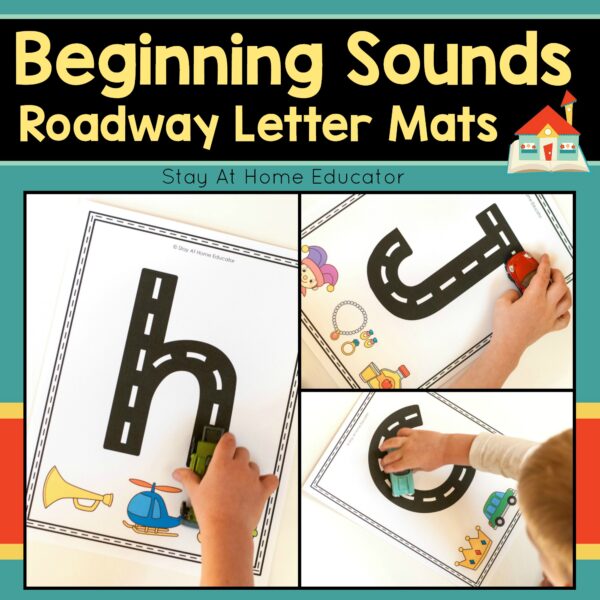
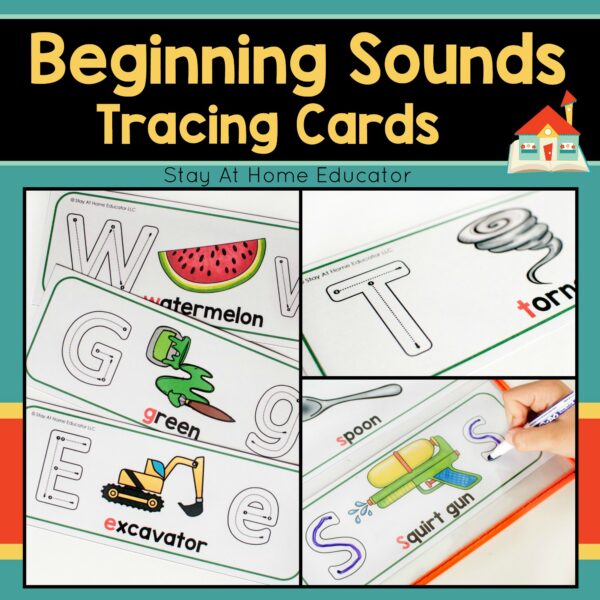
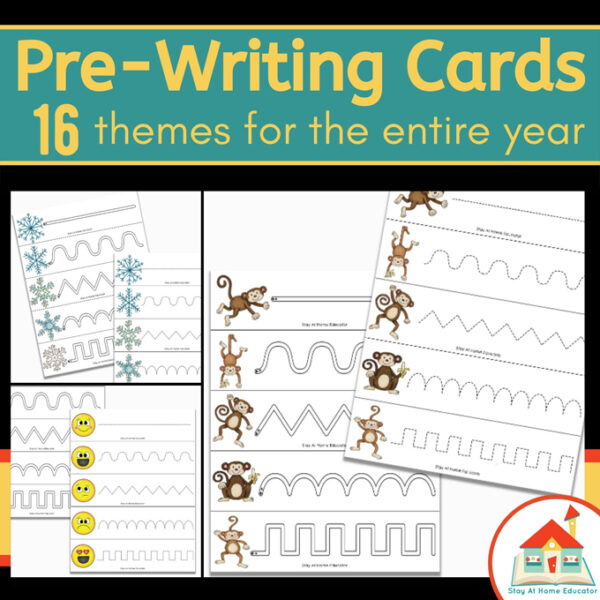
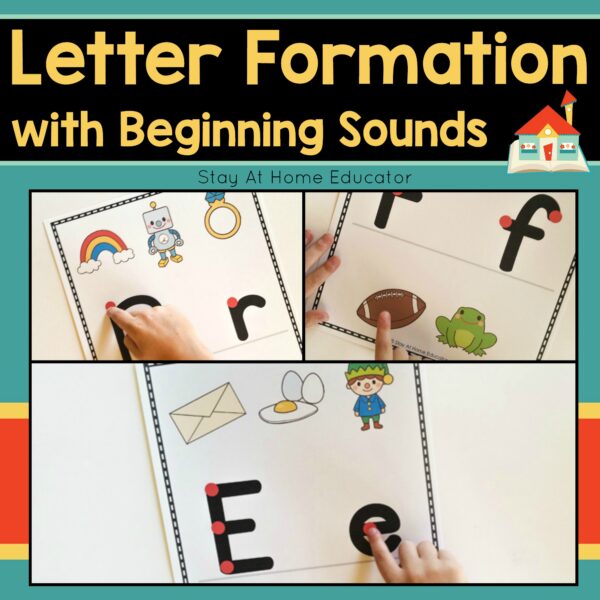
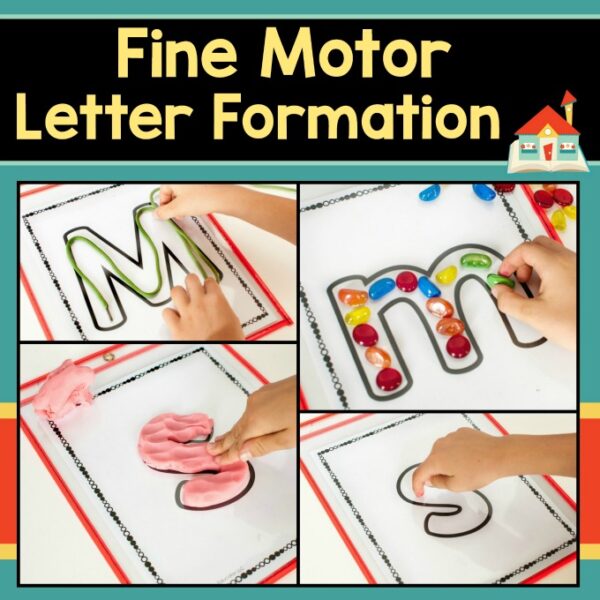

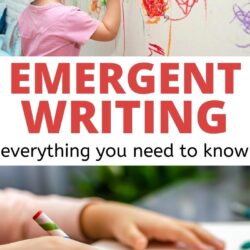
[…] in early childhood, and visual discrimination skills are important in learning how to read and write, but also are used in math, social studies and in social intersections as […]